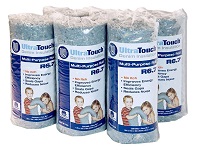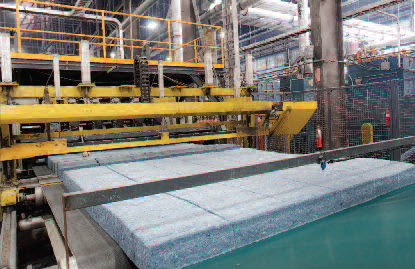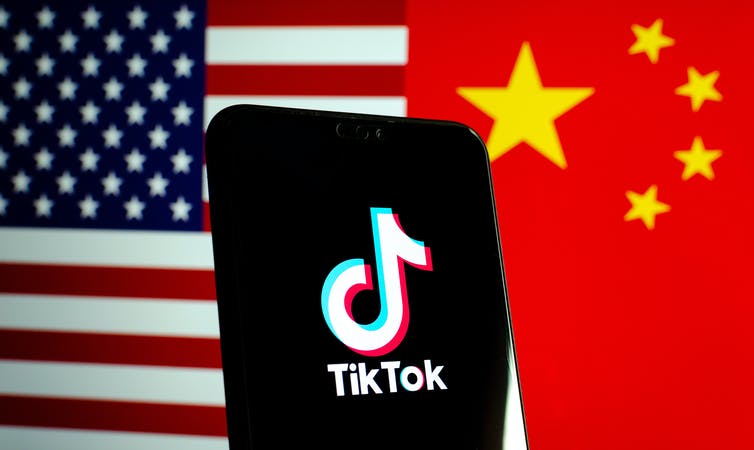FW
India has invited leaders of Bangladesh's textile and knitwear industry to attend the upcoming Textiles India 2017. This is a mega trade event for the textile and handicraft sectors and will showcase the entire range of Indian textile products from 'Farm to Fiber to Fabric to Fashion'. According to the Indian high commission to Dhaka, the event will be held in Gandhinagar of Gujarat from June 30 to July 2 and will be inaugurated by Prime Minister Narendra Modi.
A delegation comprising chairman and vice-chairman of the Synthetic and Rayon Textiles Export Promotion Council (SRTEPC) of India visited Dhaka in this regard. They held meetings with senior members of the Bangladesh Garments Manufacturers and Exporters Association (BGMEA) and Bangladesh Knitwear Manufacturers and Exporters Association (BKMEA) to invite them for the event.
Textiles India 2017 will also provide an opportunity to the participants to hold B2B meetings with around 2500 international buyers, international and Indian exhibitors, and 15000 Indian buyers. Over 33 round-tables will also be held on issues of concern for the various segments of textiles and handicrafts on the second day with prominent international speakers and industry leaders.
For the first quarter ended April 1, 2017, net sales of Hanes Brands increased 13 per cent. Sales for active wear and international segments increased, while sales decreased as expected for the innerwear segment and manage-for-cash businesses.
Hanes Brands is a global marketer of everyday basic apparel under world-class brands. Q1 operating profit decreased one per cent and EPS decreased ten per cent. Adjusted operating profit increased nine per cent and adjusted EPS increased 12 per cent.
Sales from acquisitions more than offset the decline in organic sales. Organic sales decreased four per cent. Categories and businesses that posted organic sales growth included Champion in the United States and Asia, US men’s underwear and the US online channel. The online sales channel in the United States accounted for ten per cent of domestic sales compared with nine per cent in the year-ago quarter.
The company realigned its reporting segments in Q1 to reflect the new model under which the business will be managed and results will be reviewed. The former Direct to Consumer segment, which consisted of outlet stores, the legacy catalog business and retail internet operations in the United States, was eliminated. Last year, the online channel represented eight per cent of US sales, up from seven per cent the year before.
A key focus for Coats, an industrial thread and yarn manufacturer, is harnessing talent and technology in textiles. Coats Synergex is a range of revolutionary composite fibers with high levels of hybrid fiber integrity and performance that can be processed into fabric form and used to mold strong, but lightweight, parts for industries including automotive and aerospace.
Coats Magellan is being used in resistive heating: by passing a current through the yarn and conductive material it can heat a surface area. Coats Magellan is a range of futuristic smart yarns that can be used in cutting edge textile technology including RFID; by integration in a tag it can send signals to a phone.
Coats Aptan XTRU and Gral XTRU are engineered yarns designed to be braided into a protective cover over wiring harness systems used in heavy vehicles and machinery. They can withstand contact with chemicals and fuels as well as extreme mechanical stresses. About a year back, Coats acquired Gotex, a Span-based company which designs and manufactures high performance fibers, yarns and tapes used in the telecommunications, energy and oil and gas sectors.
Coats will showcase some of these products at Techtextil, Germany, May 9 to 12
Not a single global fashion brand is really transparent about its supply chain.This is among the findings of Fashion Revolution, a campaign group, which reviewed and ranked 100 of the biggest global fashion and apparel brands and retailers. Out of a possible 250 points Adidas and Reebok scored highest with 49 points, Marks & Spencer and H&M scored 48 and Puma, Banana Republic, Gap and Old Navy score 46 points.
These brands represent a cross section of market segments including high street, luxury, sportswear, accessories, footwear and denim from across Europe, North America, South America and Asia. They were asked to disclose information about their suppliers, supply chain policies and practices.
A little more than 30 of the 100 brands publish their supplier lists - at least at the first tier where clothes are typically cut, sewn and trimmed. This year 14 out of the 100 brands are also publishing their processing facilities where clothes are dyed, printed, laundered and otherwise finished at an earlier stage of production. But no brand publishes its raw material suppliers, so there is no way of knowing where cotton, wool or other fibers come from or who produces them. Wholesalers, agents and distributors play profitable roles in the clothing industry that the public doesn't really see.
"The Blue Jeans Go Green™ program, a denim recycling program in its 11th year, launched by Cotton Incorporated in 2006, gives new life to old denim — a fabric made of cotton — by recycling and converting it into UltraTouch™ Denim Insulation. While the product sells in the US at stores like Home Depot and Lowe’s, a portion is distributed each year to organizations like Habitat for Humanity to help communities in need. So far, more than 250,000 sq. ft. of the natural fiber insulation has been distributed to such programmes. "

The Blue Jeans Go Green™ program, a denim recycling program in its 11th year, launched by Cotton Incorporated in 2006, gives new life to old denim — a fabric made of cotton — by recycling and converting it into UltraTouch™ Denim Insulation. While the product sells in the US at stores like Home Depot and Lowe’s, a portion is distributed each year to organizations like Habitat for Humanity to help communities in need. So far, more than 250,000 sq. ft. of the natural fiber insulation has been distributed to such programmes. As Jonathan Greller, President, Saks OFF 5TH says, this partnership was a natural fit for them allowing them to give back to the community and, at the same time, deliver a service to customers that reward them as well.

Cotton Incorporated teamed with Bonded Logic, a Chandler, AZ based insulation company to manufacture the product, which contains 80 per cent post-consumer recycled content. Bonded Logic has more than 35 years experience designing and creating natural fibre insulation products. To date, the company has produced 2.7 million sq. ft. of insulation from recycled denim — enough to line 46 football fields.
Ultratouch technology
Bonded Logic maintains its product is good both for the environment and homeowners. Traditional insulation manufacturers consume considerably more energy while creating additional unwanted pollution and landfill waste, the company states. UltraTouch™ contains zero VOCs (volatile organic compounds), has no off-gassing concerns and lacks the formaldehyde of traditional insulation products. With UltraTouch™ the structure is well insulated, maximising HVAC efficiency, creating a healthy space to live and work.
Natural cotton allows the insulation to provide maximum thermal performance as well as sound absorption. The insulation is also fire- and mold-resistant, made from denim that has already served its purpose and would normally be thrown out. Through the program, Cotton Incorporated has helped collect more than 1.5 million pieces of denim — enough to make a denim path the length of California. Collecting this denim has diverted from landfills approximately 750 tonne of textile waste, akin to the weight of almost 400 cars.
Partners in progress
In its effort to reduce, reuse, and recycle denim, Cotton Incorporated has worked with a number players to make it easy for consumers who want to donate their worn denim pieces. Partners included colleges — including the University of Kentucky, James Madison, and Quinnipiac –NASCAR and multiple retailers. Madewell began partnering with the program in 2014 and has since collected over 155,000 pieces of denim. The retailer is participating again this year, allowing shoppers to recycle their ‘pre-loved’ jeans, and handing them $20 discounts for a new pair. Shoppers can bring their old jeans into any of Madewell’s stores year round, and the retailer sends them all to the Blue Jeans Go Green™ program. By the end of 2017, Madewell is dedicated to collecting 200,000 pairs of denim to be recycled through the program.
The average American owns seven pairs of jeans and seven pieces of denim, according to the Cotton Incorporated Lifestyle Monitor™ Survey. That could translate into a lot of disposed denim. And 1,600 pieces of recycled denim diverts roughly one tonne of waste from a landfill. The Council for Textile Recycling says charities sell just 10-20 per cent of the clothes donated to their locations. They are left with billions of pounds of unsold clothes that they can sell for salvage to professional recycling firms. These firms separate the wearable pieces that can be exported to other countries as secondhand apparel. Another portion is converted into reclaimed wiping rags. And the rest is recycled for home insulation, carpet padding and raw material for the automotive industry. Still, the council says the rate of textile recycling is just 15 per cent.
In 2009, the Blue Jeans Go Green™ program earned the record for the ‘Most Items of Clothing Collected for Recycling’, with 33,088 pieces of denim. The next year, a grant program was established to give architects, builders and project developers the opportunity to apply for contributions of insulation for civic-minded buildings. Four years later, the program celebrated recycling the one-millionth piece of denim.
Haryana’s textile policy aims at integrated development of the textile industry and removing the current mismatch across the value chain. While Haryana accounts for six per cent of national cotton production, it has only one per cent of the spindles and less than one per cent of the national weaving capacity, pointing towards a scope for investments across the value chain in the state.
The policy has introduced measures such as a capital subsidy at 10 per cent for investment in plant and machinery, which will reduce the project cost upon commissioning; an interest subsidy in the range of four to six per cent for all types of new textile units, depending on the area or category of district; and support for establishing textile parks in terms of additional fiscal incentives as well as infrastructure augmentation.
This is in addition to the Scheme for Integrated Textile Parks to support the overall industrial growth in this sector. The textile policy is expected to make Haryana competitive for investments in the textile sector going forward. Maharashtra, Gujarat, Madhya Pradesh, among others, already have textile policies in place for facilitating investments in the sector. These states have benefited over the years from these policies, as is evident from the capacity additions.
VF Corporation has announced that it has completed the sale of its licensed sports group business to Fanatics. The announcement comes just days after the release of VF’s first quarter results. The group contributed nearly $550 million to VF as half of the billion-dollar image wear coalition. The Greensboro, South Carolina-based company has been exploring strategic alternatives for the LSG business since March 2016.
In the month of April VF announced that it had entered into an agreement to sells its LSG business to Fanatics. The Jacksonville, FL-based online retailer in 2020 will replace Majestic, one of the brands in the LSG business, as the official partner of Major League Baseball. Majestic has been in partnership with MLB since 2004.
The sale also follows the announcement of VF’s 2021 growth plan that includes prioritization of digital and direct-to-consumer, increasing focus on Chinese market, and reshaping its brand portfolio. President and CEO Steve Rendle commented that the company’s first quarter results were in line with expectations, despite incurring a $5.5 million net loss from the LSG sale.
VF reported a 2 per cent dip in total revenue to $2.6 billion and an 8 per cent decrease in earnings per share. The international revenue and direct-to-consumer revenue both increased and digital revenue jumped sharply by 25 per cent
Global blue denim fabric imports by the US during the January-February 2017 period witnessed a marginal growth in volumes of 0.05 per cent over the same period last year. But in value terms there was a fall of 7.33 per cent over the corresponding period last year.
China and Mexico were the top exporters of blue denim fabric to the US. China recorded a boost in volumes while it noted a decrease in values during the period. On the other hand, Mexico was down both in value and volume exports to the US.
More than 98 per cent of total US denim apparel imports are jeans. Men’s and boys’ represent the largest segment. Bangladesh is the US’ third largest source of denim apparel. Vietnam’s denim exports to the US are rising. Men’s jeans imports are dominated by Mexico and women’s jeans imports are dominated by China. However, the share of jeans in total cotton trouser imports by the US is falling.
T he US import market for denim apparel is extremely tough and competitive. This market is characterized by extremely competitive pricing structures. Denim skirts account for approximately one per cent of total denim apparel imports of the US. Denim jackets and coats account for 0.38 per cent of total denim apparel imports of the US.
The global textile industry waste management market is projected to grow at a CAGR of around 11 per cent from 2017 to 2021. The market is characterized by many well-diversified players competing intensely with one another. Global players increase their footprint in the market with their huge infrastructure and R&D support, and regional vendors are mainly restricted to developing economies. The competitive environment in the market is likely to intensify further over the forecast period due to an increase in product/service extensions, technological innovations, and mergers and acquisitions.
These are top vendors in the global textile industry waste management market. For example, ChemTreat is an industrial water treatment company with a line of over 1,200 products. The company provides the direction in new product formulations and the development of R&D projects, as well as training materials for the sales force.
Similarly, General Electric develops water, water recycling and reuse, wastewater treatment, and process solutions. The company provides water treatment, wastewater treatment, and process systems solutions. And Lenntech provides water treatment solutions for all applications.
Pall Corporation is involved in the manufacturing and marketing of filter separation, water purification products, and integrated system solutions. It is a global leader in the rapidly growing field of filtration, separation, and purification. Veolia provides drinking water treatment solutions and technologies for municipalities and industries in France.
India may soon have to phase out its export subsidy regime, according to WTO rules. Least developed countries and developing countries whose gross national income per capita is below a certain level are allowed to provide export incentives to any sector that has a share of below 3.25 per cent in global exports.
In case a sector in such a country crosses the 3.25 per cent threshold for two consecutive years, it has to phase out export subsidies for that sector within eight years. India’s textile exports crossed the 3.25 per cent mark in 2010, requiring it to end its export incentives to the sector by December 2018. Schemes such as the Merchandise Exports from India Scheme, Export Promotion Capital Goods Scheme and Interest Equalization Scheme for the textile sector are likely to get impacted.
Though India is likely to seek two to four years’ extension, the country has to move toward WTO-compatible, production-based subsidies from export- based subsidies. It needs to provide support for technology upgradation, capacity building and resolve infrastructure bottlenecks and move away from direct incentives to exporters. Simultaneously, India is also set to face the larger challenge of completely phasing out export incentives for all sectors.











